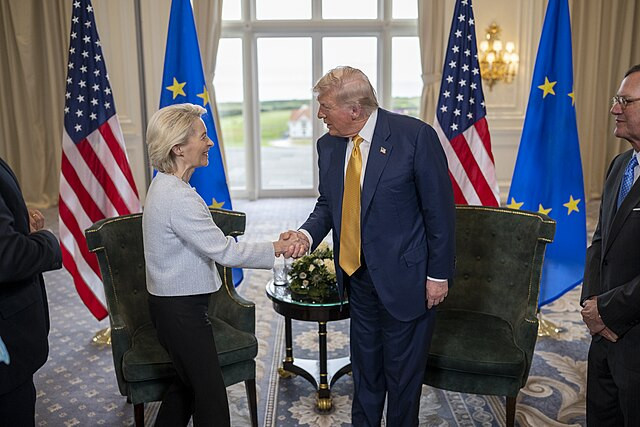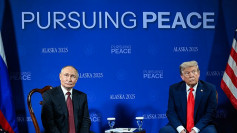The United States and European Union on Thursday outlined long-awaited details of their new trade framework, setting tariff caps on key sectors including automobiles, pharmaceuticals, and semiconductors while confirming Europe's multibillion-dollar commitments to U.S. energy and investment.
The deal, announced in late July by President Donald Trump and European Commission President Ursula von der Leyen, establishes a 15% blanket tariff on EU exports to the U.S. but lowers the risk of sector-specific duties that had alarmed European industry.
European autos and auto parts, which currently face tariffs of 25% to 27.5%, will only benefit from the reduced 15% rate once Brussels introduces legislation to drop industrial tariffs on U.S. goods. "The United States and the European Union intend to accept and provide mutual recognition to each other's standards," the joint statement said. A senior White House official noted the condition was designed "to hold each side accountable" and pressure Europe to move forward with its own tariff reductions.
Pharmaceuticals, another flashpoint in trade talks, will also see duties capped at 15%. The Trump administration confirmed that beginning September 1, it will apply its "most favored nation" drug pricing policy to generic pharmaceuticals only. That follows months of threats from the White House of levies as high as 250% on the sector, along with pressure on companies to reduce prices or relocate production to the U.S.
The trade framework also covers semiconductors, lumber, and other industrial goods. Several tariffs previously imposed under Section 232 will be capped at 15%, well below the 100% duties once threatened on chips.
Europe, in turn, has committed to eliminating tariffs on U.S. industrial goods and granting preferential access for American seafood and agricultural products. EU Trade Commissioner Maros Sefcovic told reporters Thursday that "this is the most favorable trade deal the U.S. has extended to any partner," but emphasized, "This is not the end. This is the beginning."
The EU pledged to purchase $750 billion in U.S. energy through 2028, spanning oil, natural gas, and nuclear, and to channel an additional $600 billion in investment into strategic U.S. sectors such as pharma, semiconductors, and autos. A senior administration official noted these figures were "intended and expected" commitments rather than binding guarantees.
The framework also called for Europe to increase procurement of U.S. military and defense equipment, even as it continues building its own defense capacity. However, digital services-long a point of contention between Washington and Brussels-were left out of the agreement.
Industry groups, particularly in Germany's auto sector, remain cautious. The German Association of the Automotive Industry (VDA) warned that a 15% U.S. tariff on auto products would still "cost German automotive companies billions annually and place a burden on them in the midst of their transformation."






